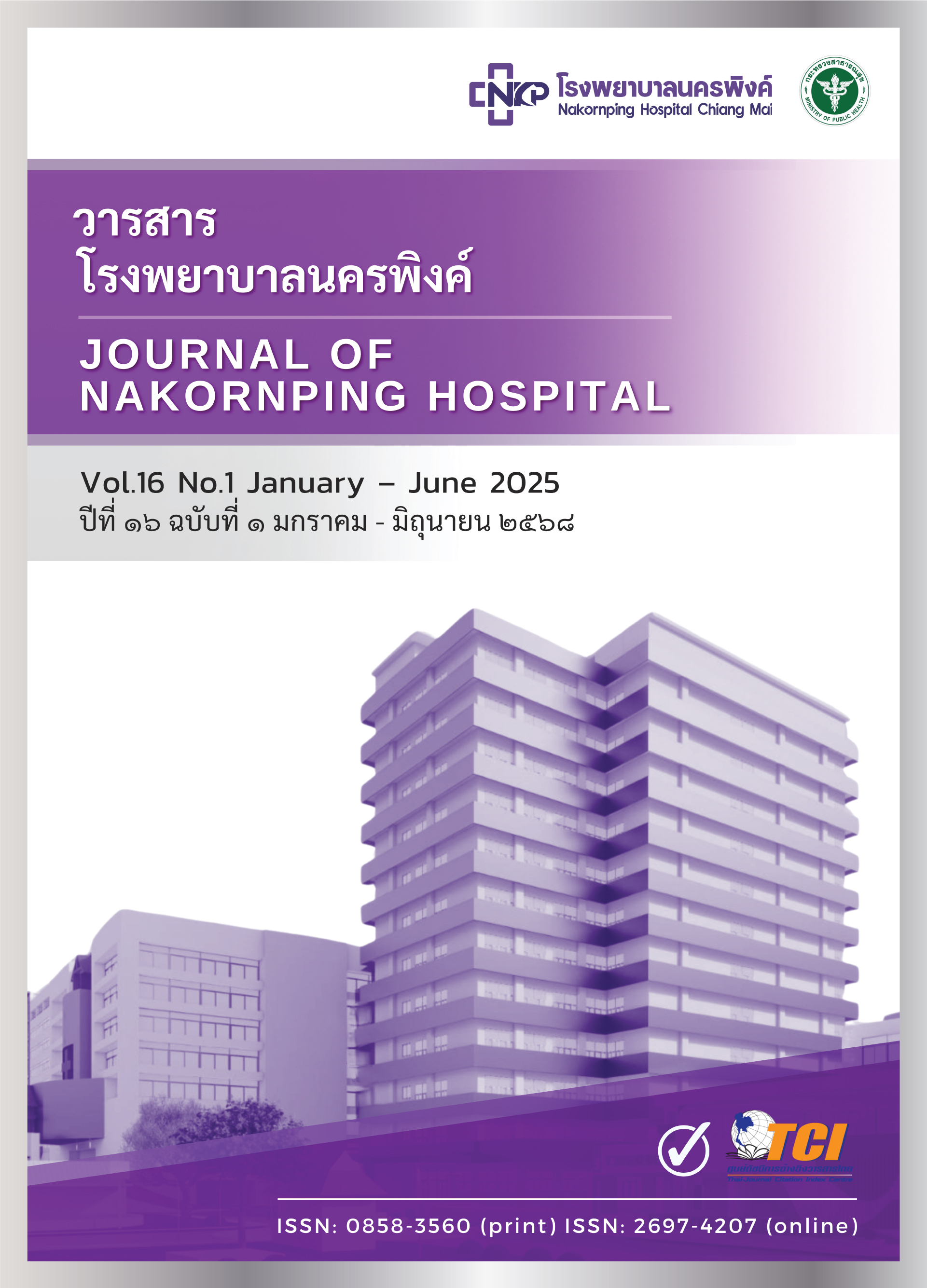Comparative analysis of complications associated with percutaneous nephrostomy: suction tubes versus pigtail catheters
Keywords:
percutaneous nephrostomy, complication, dislodgement, obstruction, urinary tract infectionAbstract
Background: Percutaneous nephrostomy (PCN) is a common treatment for urinary tract obstruction, with the pigtail catheter being the standard choice. Due to cost considerations, some urologists use suction tubes instead. This study aimed to compare the rates of dislodgement, obstruction and febrile urinary tract infection (UTI) between pigtail and suction tube nephrostomy catheters.
Materials and Methods: This retrospective cohort study analyzed data from patients who underwent PCN at Phayao Hospital from January 2018 to September 2022. Included patients had a PCN tube in place for more than 30 days. Data collected included catheter type (suction tube or pigtail catheter), the length of time between catheter changes, and the occurrence of dislodgement, obstruction and febrile UTI.
Results: A total of 429 cases were reviewed. Among them, 83.9% used suction tube catheters, while 16.1% used pigtail catheters. The mean time between catheter changes was 31.1 (±10.8) days for suction tubes and 94.6 (±26.6) days for pigtail catheters. The suction tube group had significantly higher rates of dislodgement (IRR=7.43, p=0.021), obstruction (IRR=12.14, p=0.016) and overall complications (IRR=9.39, p=0.001) compared to the pigtail catheter group. However, no significant difference was found in febrile UTI rates (IRR=13.34, p=0.123).
Conclusion: Suction tube nephrostomy catheters have higher rates of dislodgement, obstruction and overall complications compared to pigtail catheters.
References
Dauw CA, Wolf JS. Fundamentals of Upper Urinary Tract Drainage. In: Campbell MF, Walsh PC, Wein AJ, Partin AW, Dmochowski RR, Kavoussi LR, et al. Campbell-Walsh-Wein Urology. 12th ed. Netherlands: Elsevier; 2021. p.160-84.
Goodwin WE, Casey WC, Woolf W. Percutaneous trocar (needle) nephrostomy in hydronephrosis. J Am Med Assoc. 1955;157(11):891-4. doi: 10.1001/jama.1955.02950280015005.
Paul EM, Marcovich R, Lee BR, Smith AD. Choosing the ideal nephrostomy tube. BJU Int. 2003;92(7):672-7. doi: 10.1046/j.1464-410x.2003.04454.x.
Bayne D, Taylor ER, Hampson L, Chi T, Stoller ML. Determinants of nephrostomy tube dislodgment after percutaneous nephrolithotomy. J Endourol. 2015;29(3):289-92. doi: 10.1089/end.2014.0387.
Turo R, Horsu S, Broome J, Das S, Gulur DM, Pettersson B, et al. Complications of percutaneous nephrostomy in a district general hospital. Turk J Urol. 2018;44(6):478-83. doi: 10.5152/tud.2018.37336.
Wah TM, Weston MJ, Irving HC. Percutaneous nephrostomy insertion: outcome data from a prospective multi-operator study at a UK training centre. Clin Radiol. 2004;59(3):255-61. doi: 10.1016/j.crad.2003.10.021.
Panach-Navarrete J, Tonazzi-Zorrilla R, Martínez-Jabaloyas JM. Dislodgement in Long-Term Patients with Nephrostomy Tube: Risk Factors and Comparative Analysis Between Two Catheter Designs. J Endourol. 2020;34(2):227-32. doi: 10.1089/end.2019.0655.
The Comptroller General’s Department, Ministry of Finance. Most urgent letter No. กค 0416.4/ว 484 dated December 21, 2017, Regarding the categories and rates of prosthetic devices and medical equipment for treatment; c2017. [updated 2017 Dec 21]. Available from: https://saraban-law.cgd.go.th/easinetimage/inetdoc?id=show_CGD.A.22457_1_BCS_1_pdf [In Thai]
Stover J. PVC vs. Polyurethane: A Tubing Comparison [Internet]. London: Medical design briefs; c2015 [updated 2015 Mar 1; cited 2024 Nov 10]. Available from: https://www.medicaldesignbriefs.com/component/content/article/21705-pvc-vs-polyurethane-a-tubing-comparison.
Fernández Cacho LM, Ayesa Arriola R. Health Education Intervention for Patients Undergoing Placement of Percutaneous Nephrostomy Tube: A Randomized Controlled Trial. J Wound Ostomy Continence Nurs. 2021;48(4):307-10. doi: 10.1097/WON.0000000000000765.
Gomes LC, Silva LN, Simões M, Melo LF, Mergulhão FJ. Escherichia coli adhesion, biofilm development and antibiotic susceptibility on biomedical materials. J Biomed Mater Res A. 2015;103(4):1414-23. doi: 10.1002/jbm.a.35277.
Ahmed I, Hussain S. Percutaneous nephrostomy using hospital modified catheters for cost containment. East Afr Med J. 1995;72(6):391-3.
Riewpaiboon A. Measurement of costs for health economic evaluation. J Med Assoc Thai. 2014;97(Suppl 5):S17-26. [In Thai]
Downloads
Published
How to Cite
Issue
Section
License
Copyright (c) 2025 Nakornping Hospital

This work is licensed under a Creative Commons Attribution-NonCommercial-NoDerivatives 4.0 International License.
The articles that had been published in the journal is copyright of Journal of Nakornping hospital, Chiang Mai.
Contents and comments in the articles in Journal of Nakornping hospital are at owner’s responsibilities that editor team may not totally agree with.


